It was a Friday afternoon after a long workweek when Helaina's team received the news. They knew that one of the three datasets in a recent trial looked best: clean, consistent, exactly what they'd hoped to see. But which group had received their human-identical lactoferrin? Which had gotten the bovine control?
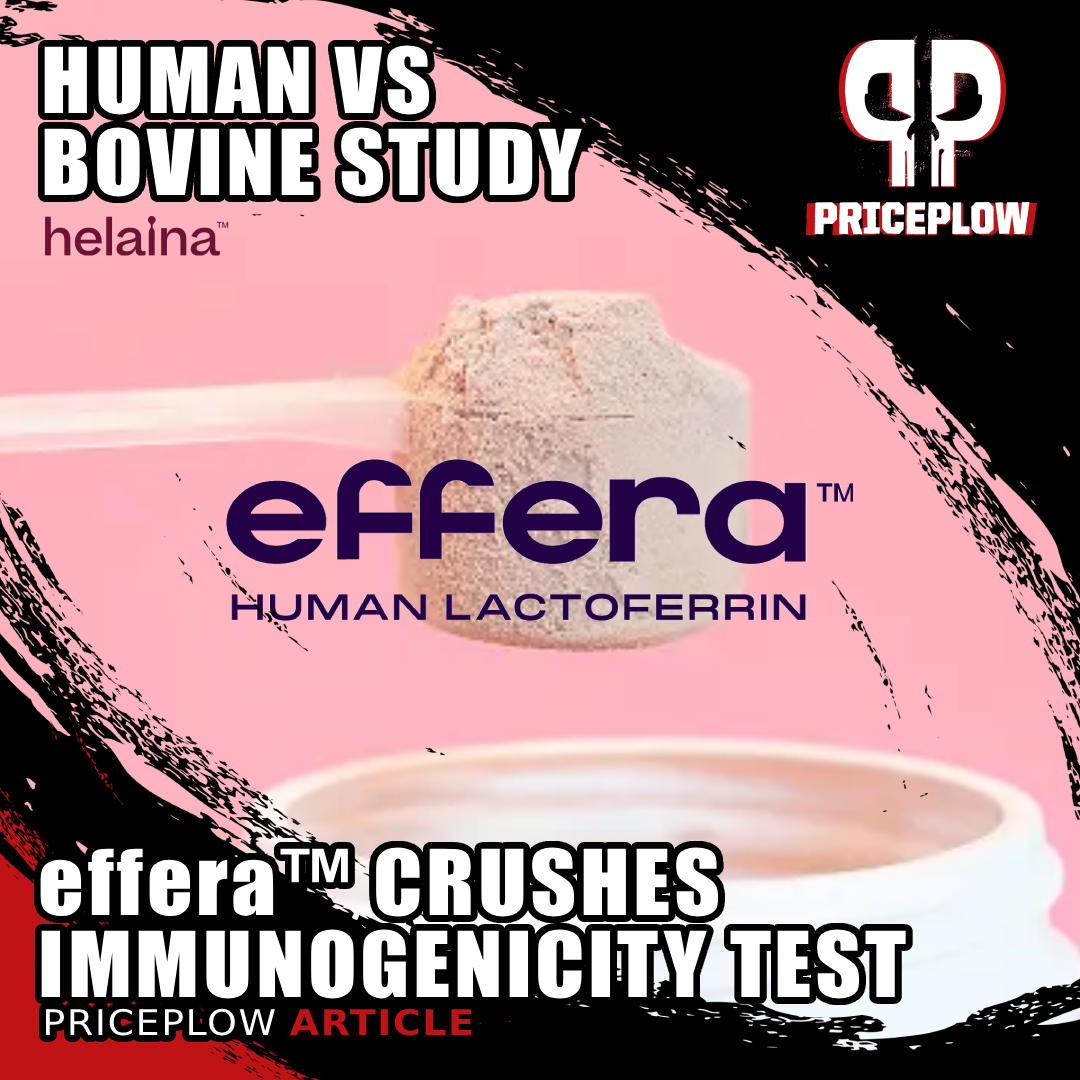
effera™ human-identical lactoferrin demonstrates no alloimmune response in groundbreaking clinical trial, while bovine lactoferrin triggered antibody responses in over 50% of participants. First study to definitively answer the alloimmunization question for precision-fermented proteins.
The answer would determine everything.
When the codes broke, the room erupted. The cleanest data belonged to effera™... at both dose levels. Not just marginally better, but dramatically, unmistakably superior to bovine lactoferrin's results. After years of development, months of clinical work, and decades of scientific questions, they finally had real evidence: human-identical lactoferrin does not trigger the immune response that bovine lactoferrin does.
This watershed moment, captured in Peterson's 2024 study published in the International Journal of Toxicology, settled a major safety question about recombinant human lactoferrin.[1] The results didn't just validate effera™, they revealed something unexpected about bovine lactoferrin that had never been tested in humans before.
We've discussed this groundbreaking study in both our podcast with Helaina CEO Laura Katz and our recent deep dive with Dan DeMarino and Anthony Clark, who gave us unprecedented access to Helaina's Manhattan precision fermentation facility. Today, we're examining the clinical trial that made everything possible.
Before we begin, sign up for PricePlow's Helaina and effera news alerts, and then let's get into what the science really showed us:
Subscribe to PricePlow's Newsletter and Alerts on These Topics
The Alloimmunization Question: Why This Study Mattered
Lactoferrin has been studied for decades. Bovine lactoferrin achieved GRAS status long ago in the United States for various food applications and has been used safely across multiple markets. Hundreds of clinical trials documented its benefits for iron homeostasis, immune function, gut health, and more.[2]
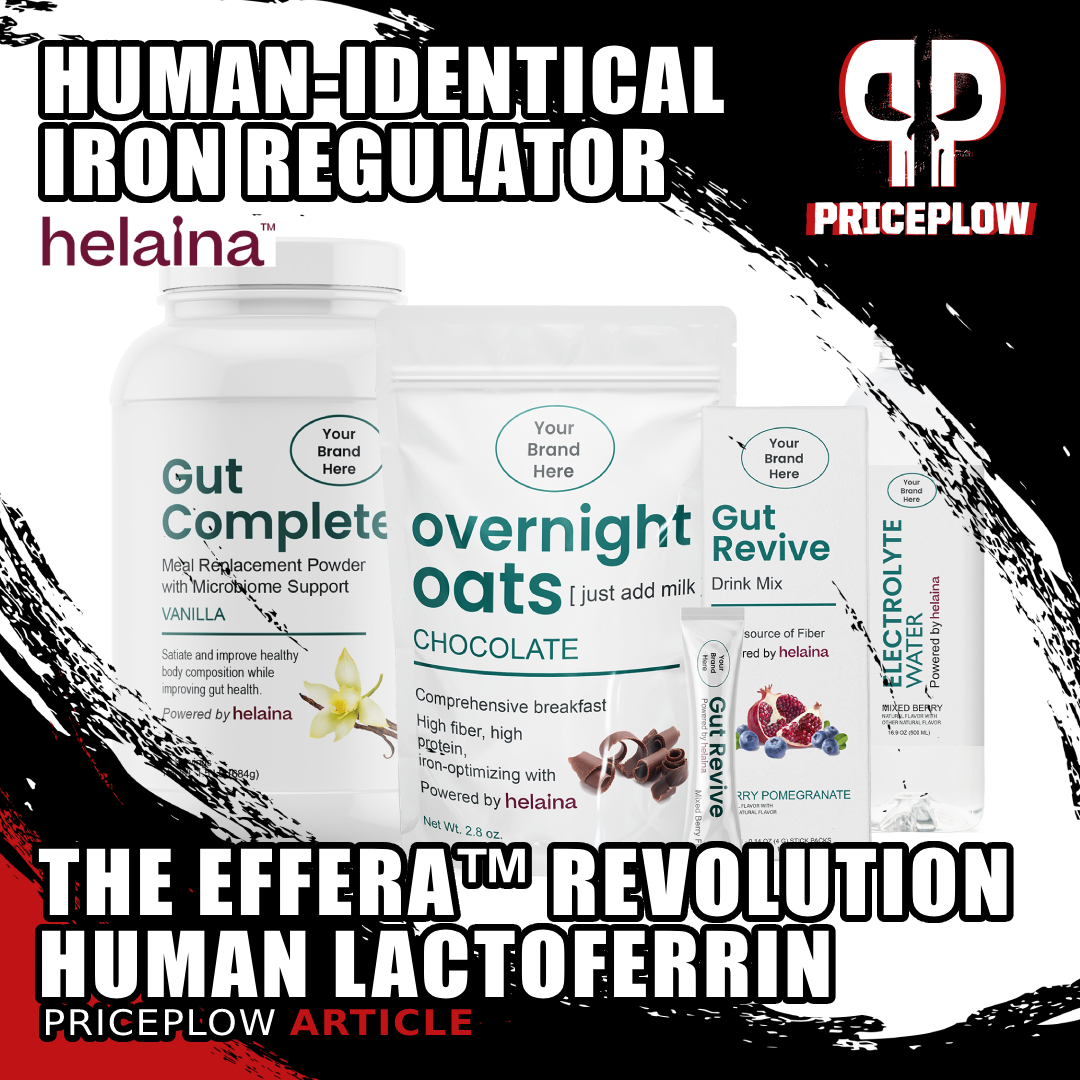
Helaina's effera™ is revolutionizing supplements with the first human-equivalent lactoferrin. Research shows better bioavailability and reduced immune response compared to bovine sources.
But recombinant human lactoferrin posed a unique question that had never been adequately addressed: Could consuming an exogenous human protein trigger alloimmunization?
Understanding Alloimmunization
Alloimmunization occurs when the immune system loses tolerance to a self-protein and begins producing antibodies against it. For therapeutic proteins given by injection, this is a well-established concern. But what about food ingredients?
Expert panels in 2008 and 2023 specifically raised this question about recombinant human lactoferrin.[3] Although recombinant human lactoferrin has the same amino acid sequence as endogenous human lactoferrin, differences in post-translational modifications due to the production system could potentially generate novel epitopes -- molecular structures the immune system might recognize as foreign.
The implications were significant. If recombinant human lactoferrin triggered antibodies against our endogenous lactoferrin, those antibodies could interfere with the protein's natural functions throughout the body: in breast milk, tears, saliva, and immune cells. Without data demonstrating "reasonable certainty of no harm", regulatory pathways would be uncertain.
Previous Studies Missed the Mark
Multiple clinical trials had evaluated bovine and recombinant human lactoferrin for various endpoints: iron absorption, immune markers, gut health, infection rates. None examined immunogenicity as a primary outcome. None measured whether antibodies against lactoferrin developed following oral consumption.
Peterson et al. designed their study to answer this question definitively, following FDA guidance for immunogenicity testing of therapeutic proteins[4] but applying it to an oral food ingredient, making it a first-of-its-kind approach.
The Study Design: Two Studies, One Goal
The research team conducted two simultaneous studies with complementary objectives.
-
Study 1: The Intervention Trial
Sixty-six healthy adults ages 18-45 were randomized to one of three groups:
- High-dose effera™: 3.4 g/day (1.7 g twice daily)
- Low-dose effera™: 0.34 g/day (0.17 g twice daily)
- Bovine lactoferrin: 3.4 g/day (1.7 g twice daily)
The dose selection was strategic. The low dose (0.34 g/day) approximated the 90th percentile estimated daily intake based on intended food applications. The high dose provided a 10-fold safety margin above typical consumption, which is exactly what the 2023 expert panel recommended.
Participants consumed their assigned product for 28 days, then returned for follow-up visits on Days 56 and 84. This timeline allowed detection of antibody responses approximately 28 days after the last exposure, aligning with FDA immunogenicity guidance.
We went behind the scenes at Helaina's Manhattan lab to see how they make human-identical effera™ lactoferrin through precision fermentation.
The study was double-blind, randomized, and controlled - gold-standard methodology for clinical research. Compliance exceeded 93% across all groups.
-
Study 2: The Observational Control
Twenty-four healthy adults were enrolled in a parallel observational study with no intervention. They provided blood samples at the same timepoints as Study 1 participants: baseline, Day 28, Day 56, and Day 84.
This control group served a critical function: establishing the natural variability of anti-lactoferrin antibodies over time in free-living adults. If antibody levels fluctuated substantially without any lactoferrin supplementation, changes in Study 1 might reflect normal biological variation rather than product-specific responses.
Measuring the Immune Response
The primary endpoint was elegant in its simplicity: Did serum anti-lactoferrin antibodies increase following supplementation?
The research team developed two separate assays: one detecting anti-bovine lactoferrin antibodies, another detecting anti-human lactoferrin antibodies. Both used a bridging electrochemiluminescence format, a sensitive method widely employed in immunogenicity testing.
The Post/Pre Ratio
Rather than measuring absolute antibody levels, the assays calculated a post/pre ratio: the antibody signal after supplementation divided by the baseline signal. This approach controlled for individual baseline differences.
A post/pre ratio of 1.0 indicates no change. Ratios above 2.0 suggest product-emergent antibodies unlikely to result from random variability, making for a conservative threshold for identifying immunogenic responses.
The beauty of this methodology: It could detect even modest immune responses while accounting for the substantial person-to-person variation in baseline antibody levels.
The Results: A Tale of Two Lactoferrins
The bovine lactoferrin group showed a clear, consistent antibody response:
Bovine Lactoferrin: An Unexpected Discovery
By Day 56 (28 days after the final dose), anti-bLF antibodies had increased 3-fold compared to baseline. This wasn't subtle -- the geometric mean ratio was 3.01 with a 95% confidence interval of 2.08 to 4.35.
More striking was the individual-level data. Twelve of 23 participants (>50%) had post/pre ratios exceeding 2.0. Some showed dramatic increases: ratios of 10, 20, even 50-fold. Seven females and five males crossed this threshold.
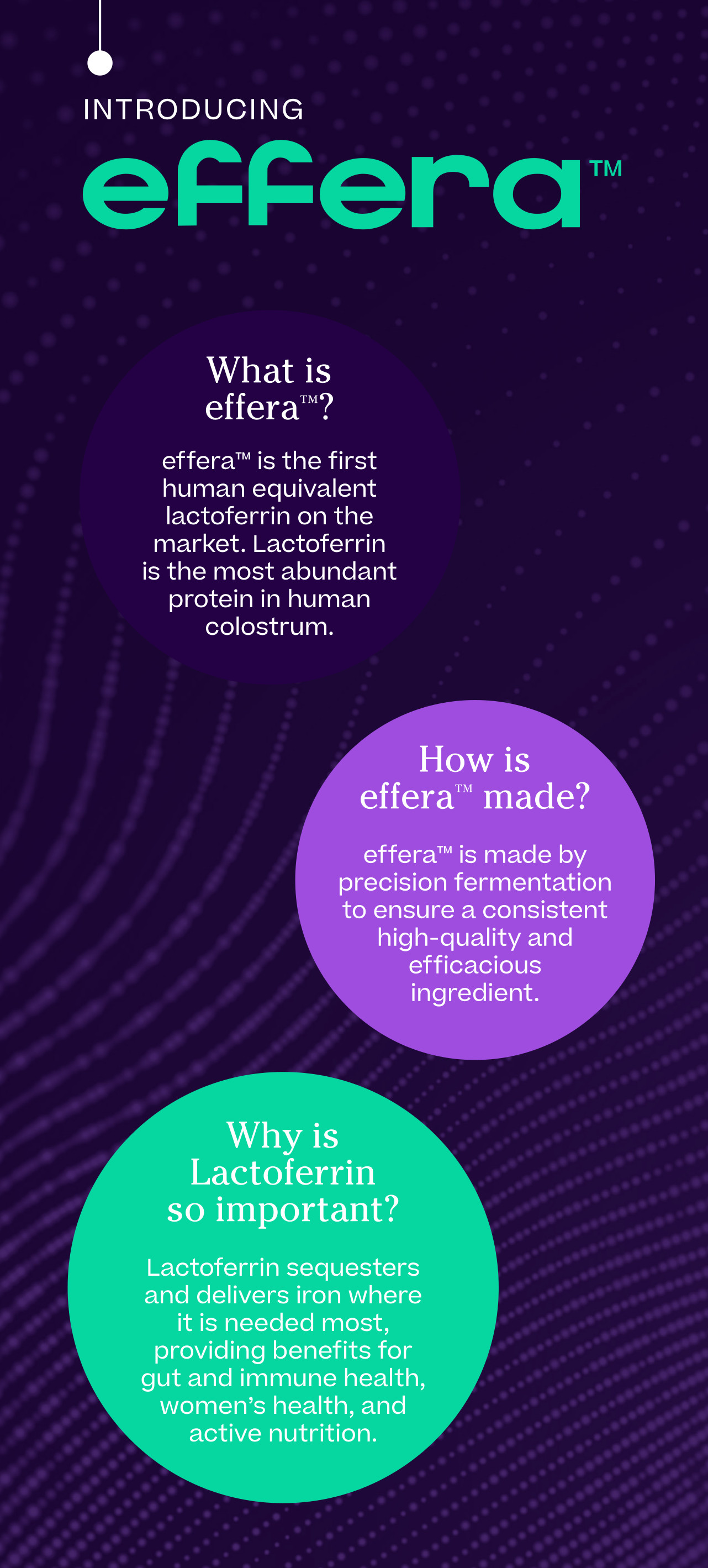
This informative infographic explains the core aspects of effera™ -- what it is (the first human-equivalent lactoferrin), how it's made (through precision fermentation for consistent quality), and why lactoferrin matters (for its ability to regulate iron and support gut health, immune function, women's health, and active nutrition).
The response persisted. At Day 84 (56 days post-supplementation), antibody levels remained elevated with a geometric mean ratio of 2.91.
This was the first study to measure anti-bovine lactoferrin antibodies after oral consumption in humans. The 3.4 g/day dose substantially exceeded typical dietary intake from dairy products (mean 39 mg/day, 90th percentile 80 mg/day in US population data), which may explain why this phenomenon hadn't been observed before.
Importantly, no serious adverse events occurred. The clinical significance of these antibodies remains uncertain, though it raises questions about chronic high-dose bovine lactoferrin supplementation that warrant further investigation. It also explains how some individuals are extraordinarily sensitive to the bovine ingredient.
eferra™: The Null Result That Changed Everything
Both effera™ groups told the opposite story.
- High-dose effera™ (3.4 g/day): Geometric mean post/pre ratio at Day 56 was 1.02 (95% CI: 0.62-1.70). Translation: no change from baseline.
- Low-dose effera™ (0.34 g/day): Geometric mean post/pre ratio was 1.07 (95% CI: 0.77-1.49). Again, no meaningful change.
The difference from bovine lactoferrin was statistically significant (P < 0.001) and clinically obvious. Every single participant in both effera™ groups maintained post/pre ratios below 2.0. Not one person showed evidence of product-emergent antibodies.
The pattern held at Day 28 and Day 84. No timepoint showed antibody elevation in the effera™ groups.
The Observational Study: Confirming Natural Variability
The observational study validated the interpretation. Without any lactoferrin supplementation, anti-human LF antibodies showed minimal variation over 12 weeks. The geometric mean ratios hovered around 1.0 at all timepoints: 1.01 at Day 28, 1.00 at Day 56, 0.99 at Day 84.
Anti-bovine LF antibodies similarly remained stable: 1.04, 1.01, and 1.06 at the respective timepoints.
The effera™ groups in Study 1 showed changes statistically indistinguishable from this natural variability. The bovine lactoferrin group did not.
What This Means: No Alloimmunization from effera™
The results directly answer the alloimmunization question: Oral consumption of effera™ at doses up to 3.4 g/day for 28 days does not trigger antibodies against human lactoferrin.
The body recognizes effera™ as "self" despite its exogenous origin. The post-translational modifications that differ between human milk lactoferrin and Helaina's human lactoferrin don't create epitopes the immune system treats as foreign. No breakdown of tolerance occurred. No antibodies developed that could interfere with endogenous lactoferrin function.
This wasn't just absence of evidence, it was evidence of absence, with statistical power to detect differences and a positive control (bovine LF) demonstrating the study's sensitivity to detect immunogenic responses when present.
Why Bovine Lactoferrin Differs
The amino acid sequence of bovine lactoferrin is approximately 70% identical to human lactoferrin. That 30% difference includes regions the immune system can recognize as non-self, even when encountered through oral consumption.
The antibody response to bovine lactoferrin doesn't indicate a safety concern, as no adverse events occurred, and bLF maintains its GRAS status. But it does highlight a fundamental difference in how the immune system perceives these proteins.
For applications where immune recognition could be disadvantageous, or where human-identical structure offers functional benefits, effera™ provides a distinct advantage.
Safety Profile: Clean Across All Measures
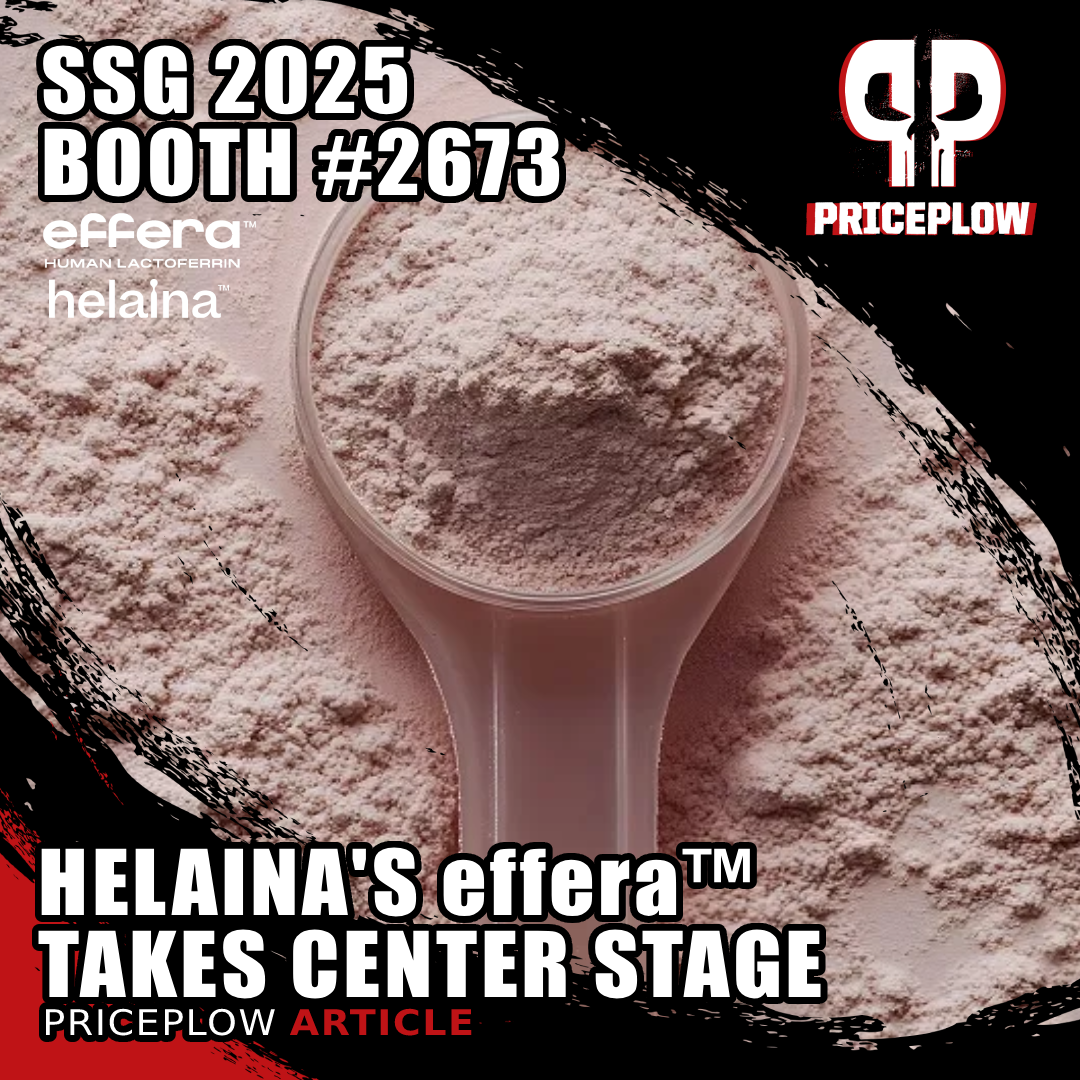
Helaina showcases effera™ at SupplySide Global 2025 (Booth #2673) with clinical data showing no immune response vs bovine lactoferrin, plus collaborations like Longevispheres Pumpkin Spice Bites and Brain Fog Chocolates for menopause support.
Beyond immunogenicity, the study monitored comprehensive safety outcomes: complete blood counts, chemistry panels, urinalysis, iron-related biomarkers, and high-sensitivity C-reactive protein.
All products were well tolerated. Only three adverse events were judged possibly or probably related to study products, all of which involving low iron saturation in participants with abnormal baseline iron status. No serious adverse events related to lactoferrin occurred.
Iron homeostasis markers (ferritin, iron saturation, total iron binding capacity, soluble transferrin receptor) showed no meaningful differences between groups. This wasn't an iron supplementation study (participants maintained their usual diets) so stability was expected and observed.
The 28-day supplementation period with 56-day follow-up provided adequate time to detect safety signals if they existed. None emerged.
The Groundbreaking Nature of This Research
This study broke new ground in multiple ways:
- First immunogenicity assessment for an oral food protein: While immunogenicity testing is standard for injectable therapeutics, applying this framework to food ingredients was novel. The methodology could be adapted for other recombinant proteins entering the food supply.
- First measurement of anti-bLF antibodies after oral exposure: Despite decades of bovine lactoferrin use, no previous study had examined whether it triggers antibody responses in humans. The findings open new research questions about chronic supplementation and immune recognition of dietary proteins.
- Answered the key regulatory question: Expert panels identified alloimmunization potential as the critical unanswered safety question for rhLF. This study addressed it head-on with appropriate methodology, providing the data needed for regulatory certainty.
- Demonstrated immunological superiority over established alternative: The direct comparison to bovine lactoferrin (and not just a placebo) demonstrated that effera™ isn't merely safe, but advantageous for immune profile.
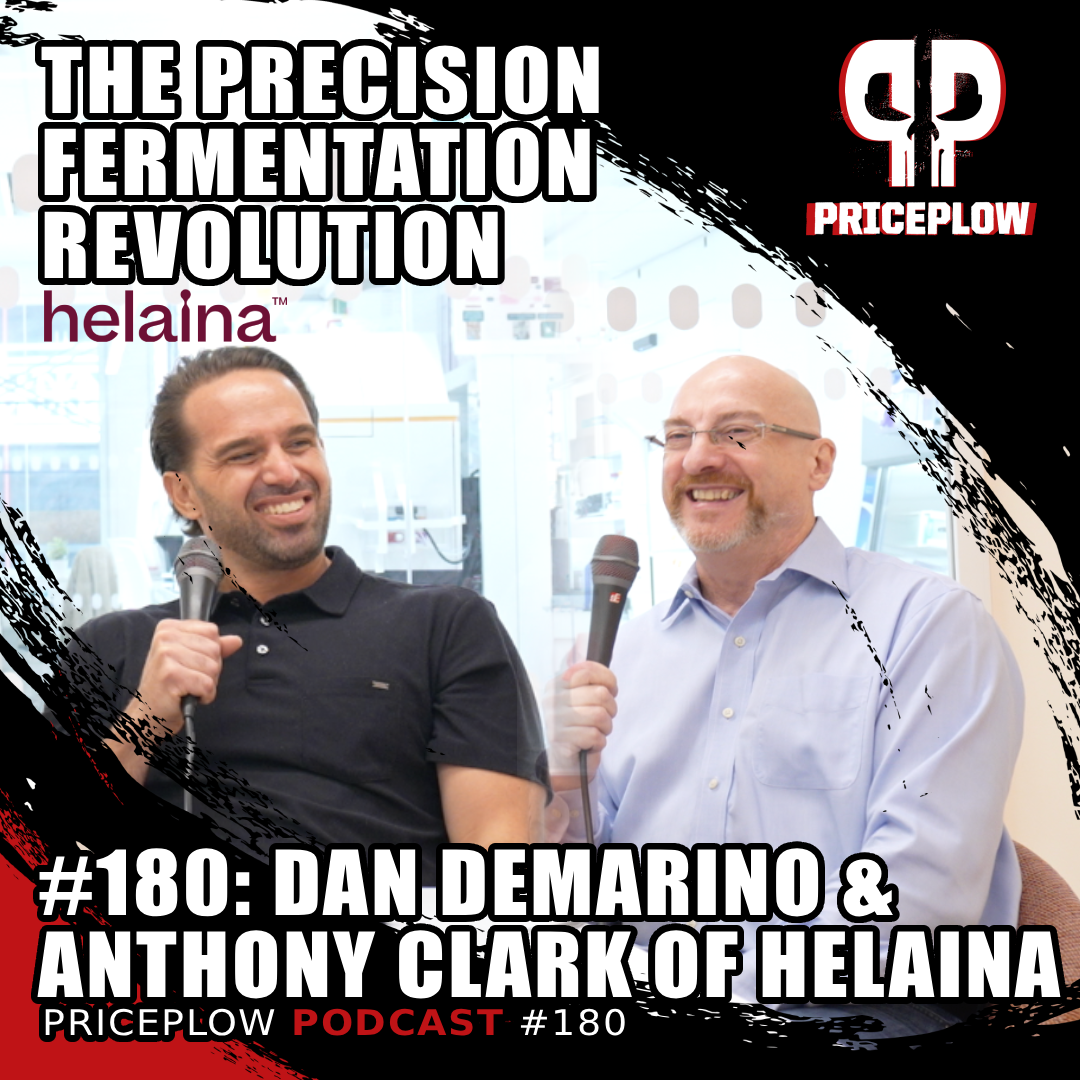
Dan DeMarino and Anthony Clark from Helaina dive deep into precision fermentation technology and effera™ human-equivalent lactoferrin, revealing how 5-week development cycles and machine learning models are revolutionizing bioactive protein production on Episode #180 of the PricePlow Podcast.
What Comes Next
These results removed the last major uncertainty about human-identical lactoferrin as a food ingredient and supplement component. With demonstrated safety, established functionality (as covered in our main effera™ article), and now a clearly-demonstrated lack of immunogenicity, the path forward is clear.
Applications span infant nutrition, sports supplements, women's health formulations, and functional foods. The precision fermentation production method (detailed in our lab tour) scales efficiently, avoiding the limitations of animal-derived sourcing.
The broader implications extend beyond lactoferrin. This study provides a template for safety assessment of other human-identical proteins produced through precision fermentation - a technology platform that will increasingly supply bioactive ingredients to the food and supplement industries.
For Helaina, that Friday unblinding wasn't just validation of years of work. It was confirmation that precision fermentation can deliver ingredients that aren't merely equivalent to their natural counterparts - they can be better.
Conclusion: The Data That Changed Everything
The Peterson et al. study gave Helaina exactly what they needed: clear, unambiguous data showing effera™ does not trigger an immune response, while bovine lactoferrin does. No hedging, no ambiguity... just clean results that speak for themselves.
This wasn't about proving bovine lactoferrin is unsafe. It's GRAS for good reasons, with decades of safe use. But when you're introducing a new category of ingredients -- human-identical proteins from precision fermentation -- you need data that goes beyond "seems to be fine" to "definitively characterized".
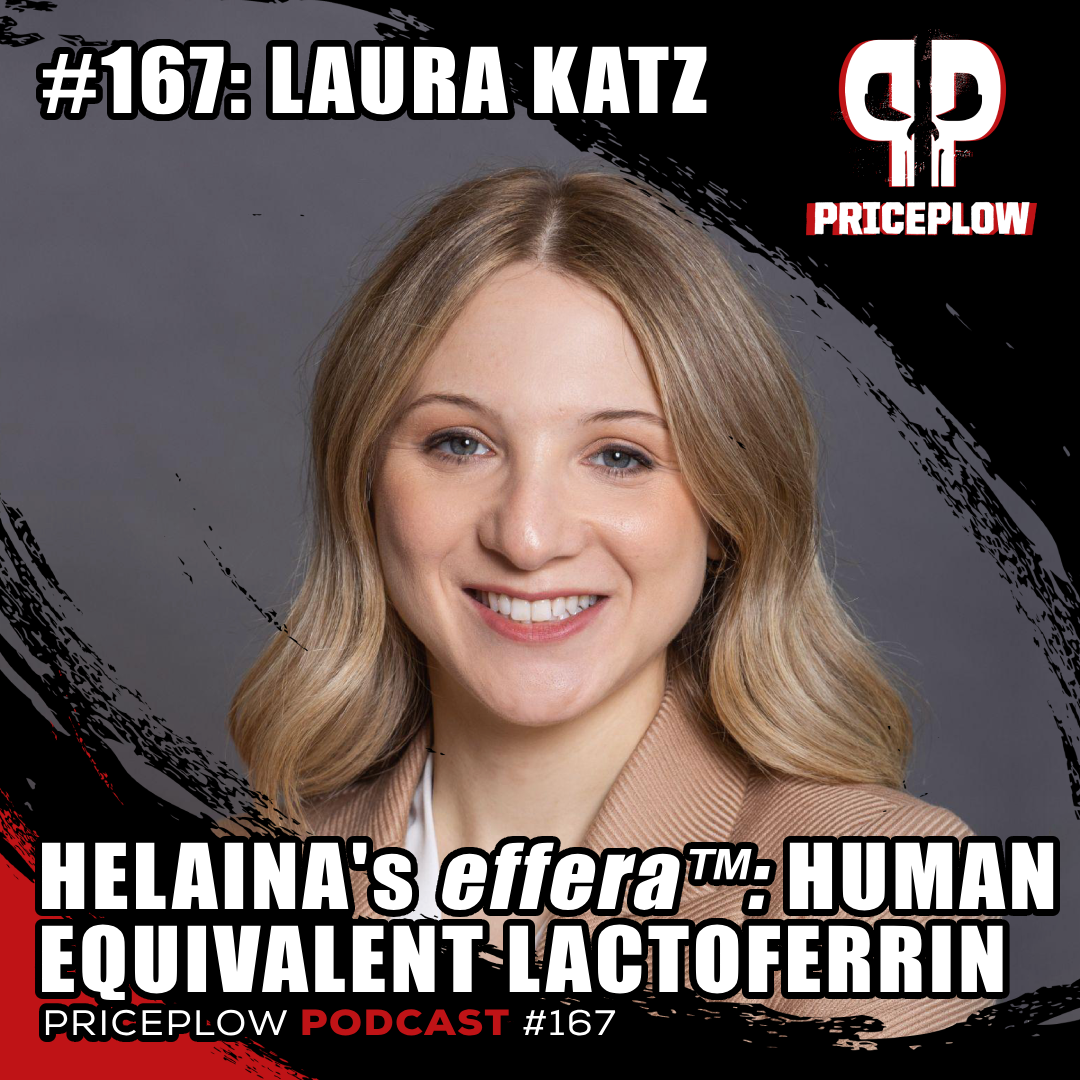
Laura Katz, founder and CEO of Helaina, discusses the revolutionary effera™ human-identical lactoferrin technology and precision fermentation platform on Episode #167 of the PricePlow Podcast.
The 3-fold antibody increase with bovine lactoferrin, contrasted with essentially zero change for effera™, gave the industry its answer. Human-identical structure matters. The immune system knows the difference. And for applications where that difference counts, effera™ offers something genuinely new.
The supplement industry now has access to a lactoferrin that functions like the human protein because it is the human protein, just made through a smarter, more sustainable process. That's not incremental improvement. That's categorical advantage.
For more on effera™ applications and the science behind human-identical lactoferrin, explore our comprehensive ingredient guide, listen to our podcast with Laura Katz, or hear the detailed discussion with Dan DeMarino and Anthony Clark.

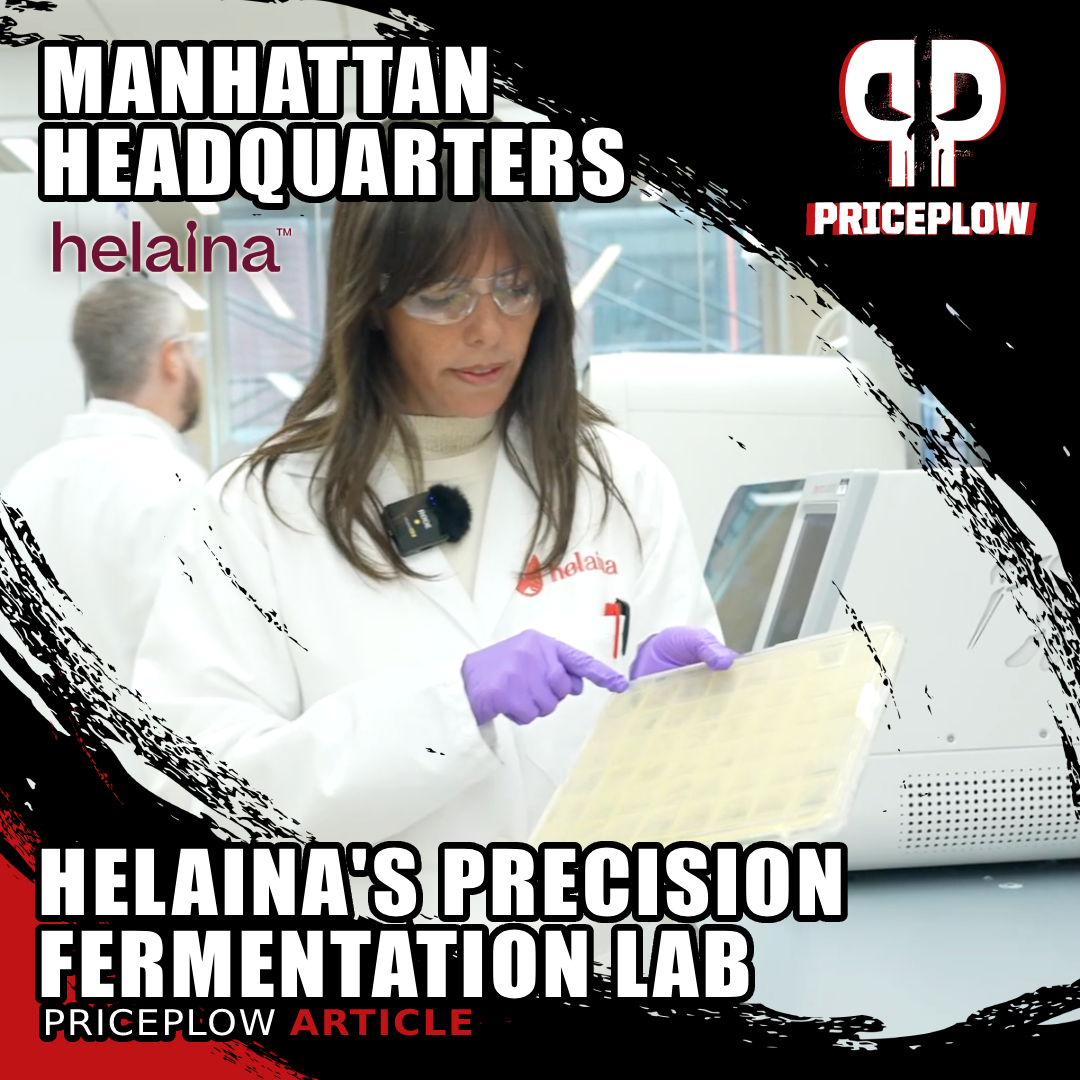

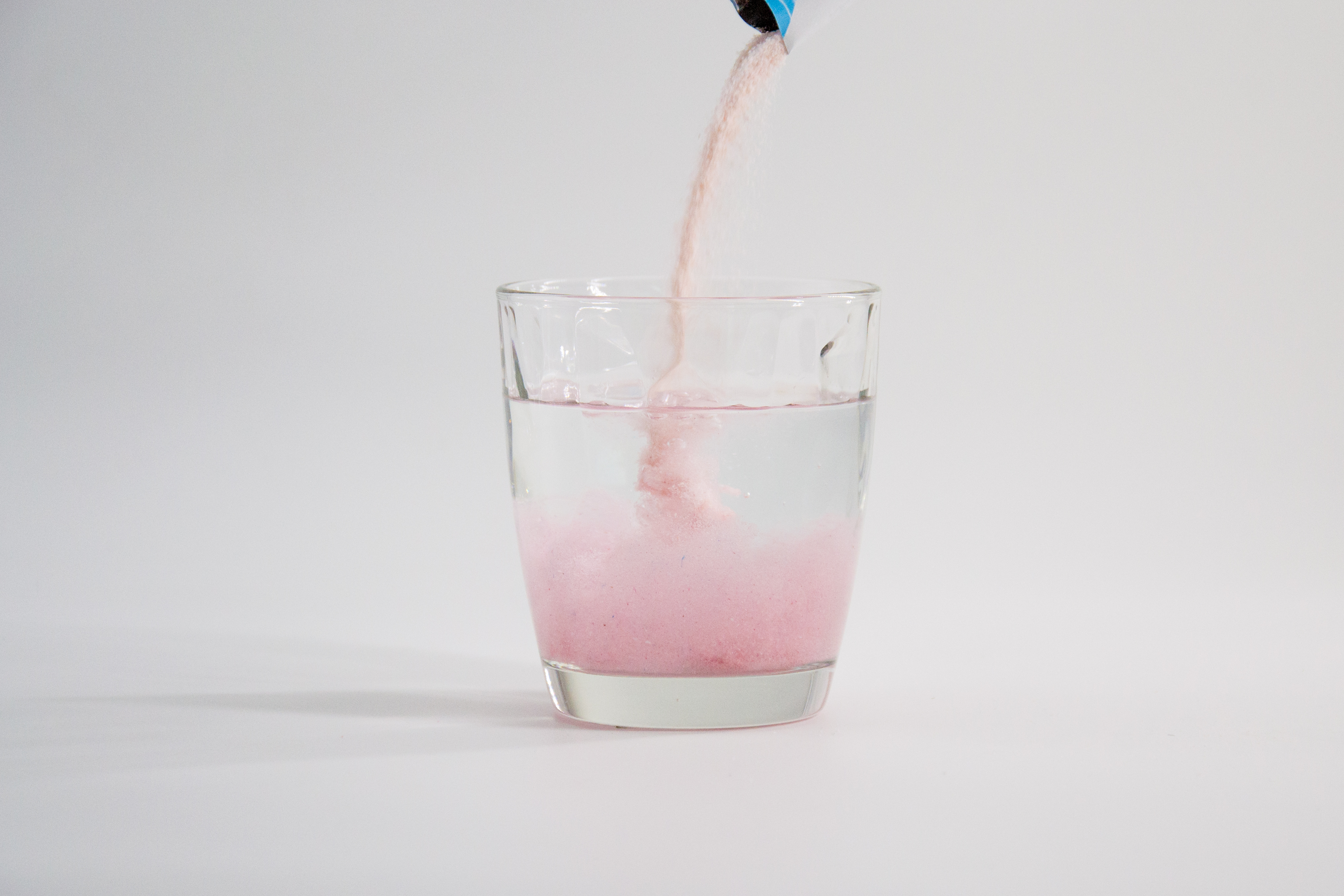


Comments and Discussion (Powered by the PricePlow Forum)